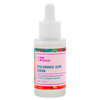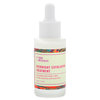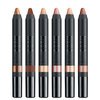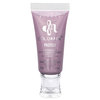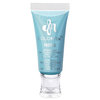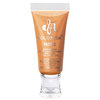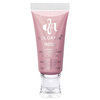
A few weeks ago, I was fooling around on Facebook, and an ad popped up. Now, Facebook’s ads never used to appeal to me (it was clear they had no idea who I was, showing “30-Minute Dinner Recipes!” and “All-Inclusive Cancun Honeymoon Resorts!”). But the social network’s creepy algorithms seem to have improved over time. They sent me an ad for lipstick once, and I clicked, and that was it. Now it’s almost 100 percent beauty products in my ad feed all the time, and I just...can’t...not look. Helpless!
One new ad was for something called a “microneedle roller” and it showed a smiling woman with perfect poreless skin holding up what looked like little pink lint brush absolutely covered in needles. WHAT. Of course I clicked on it. Turns out that for $29, you can buy this newly discovered “secret of dermatologists and celebrities” and then roll tiny needles all over your face, which would cause the skin to be injured and then “heal itself more perfectly.”Needles, you guys. Hundreds of needles. On your face.
Who would buy this? I snorted to myself.
The next week, I saw another ad for a microneedle roller. Then I saw a Groupon for one. Several thousand had been sold. It turns out that the technique is called “dermal needling” or “micro needling,” and the Google before & after pics are craaaaazy. I had to know if it was a real thing, and if it actually worked. Enter noted dermatologist Dr. Jeanette Graf, who helped clear up (heh) all things dermal needling for us. (In short, don’t DIY this one.)

What is dermal needling?
“Dermal needling is the action of inserting lots of needles into the skin very superficially to stimulate collagen production,” explains Dr. Graf. And in a dermatologist’s office, the treatment goes like this: “After cleaning the skin, we apply a thin layer of topical gel or serum and use an automated device, which has 12 tiny microneedles attached to the tip, to glide smoothly over the face. The microneedles can go anywhere from 0.5 to 2 millimeters in depth, depending on the area being treated. As the needles go in, they’re implanting the serum. We go over each area several times. Dermal needles are creating a very small amount of injury, and the result of this is that the skin is going to produce collagen.” Prices vary depending on the dermatologist, but generally, the procedure can run between $350 to $600 a session, and sessions usually last about 30 minutes.
Who should try it?
According to Dr. Graf, dermal needling is quite versatile. “We can treat brown spots, age spots, fine lines, deep wrinkles, stretch marks, acne scars, sun damage, and enlarged pores,” she says. It can even be used to tighten up sagging earlobes! (Note to self: remember this when you’re 80 years old and regretting all those years of wearing doorknocker-sized hoops.) And the procedure is safe for all ages and skin tones. How often can we say that?
Pain level and duration
Dr. Graf assured me that the procedure itself isn’t very painful, but it also depends on your pain threshold, the area being treated, and the length of the needles. “For the very deep wrinkles on the upper lip of a heavy smoker, say, we might use a topical anesthetic if the patient is uncomfortable. But for the most part, we don’t need to use anesthetic,” she says. How many sessions you’ll need depends on you, your skin, and what you’re treating, too. To complete the aforementioned upper lip treatment, Dr. Graf estimated that it could take between three to four appointments, each performed six to eight weeks apart.
Recovery time
“The downtime is very minimal and you see results immediately,” explains Dr. Graf, noting that the average person will see some redness on the face for one to four days, depending on each treatment. You can expect to have a pink glow or even a little blood (with deeper procedures), but then over the week, collagen begins to tighten the face.
Effectiveness
“Needling is very effective,” says Dr. Graf, “but only when it’s done in a medical office, where there’s supervision. The danger comes when someone tries to do this at home—with the rollers—and pushes too hard, and makes bigger holes in their face than a professional would.” On patients, Dr. Graf likes to use the Eclipse Micropen, which is a professional micro-needling device that lets you work in circles on the skin, in every direction. You can use it to really meet a patient’s needs, and because it’s automated, “we know exactly how to do it,” notes Dr. Graf. And the results last for up to six months!
In other words, all in all, dermal needling is awesome and semi-miraculous—but don’t buy those rollers online and try to do it yourself.
Photos from microneedlederma.com
You Might Also Like
-

Skincare
How to Properly Dry Brush Your Skin
- 3
-
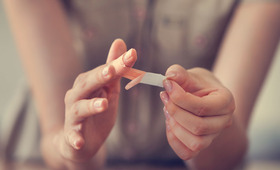
Skincare
Scar Care That Really Works
- 369
-

Masks
Time to Exfoliate!
- 77
-

Eye Cream
Do You Need Eye Cream?
- 261
-
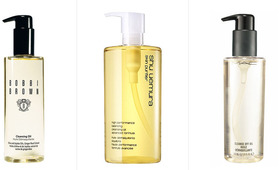
Face Skincare
Cosmetic Oils: What’s Good for Skin and Hair, and What’s Not
- 1307
-
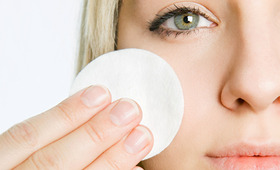
Makeup Removers
DIY Beauty: Makeup Removers
- 768
-
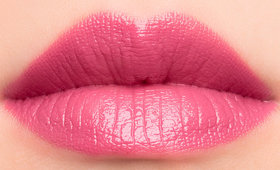
Beautylish Recommends
Where Lipstick and Lip Balm Meet
- 483
-

Skincare
What Are Those Bumps on Your Arms?
- 354





